The Importance of Air Scrubbers in Growing Spaces
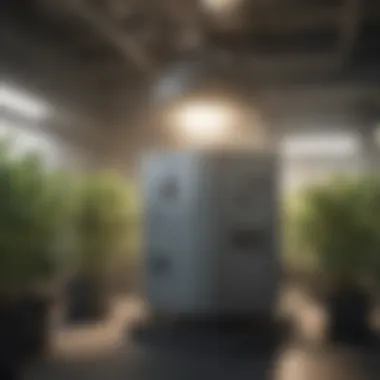
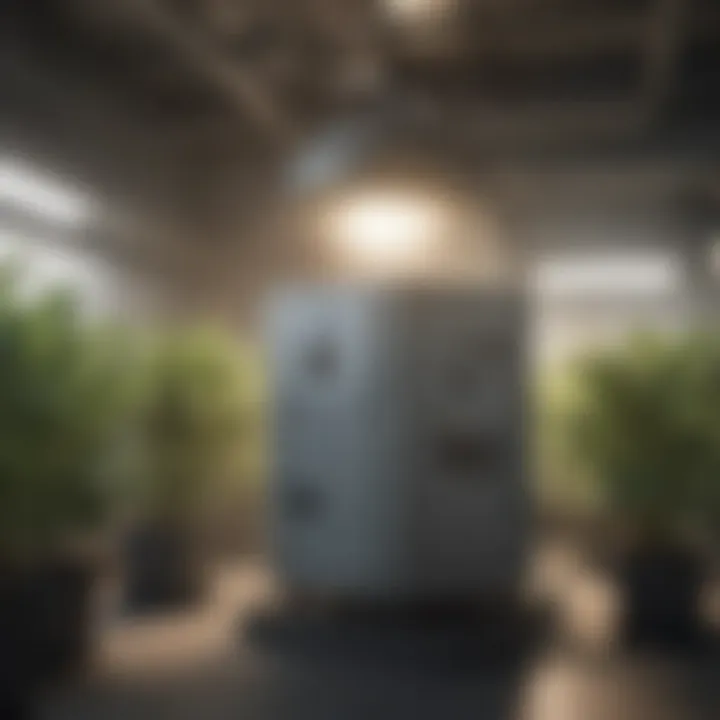
Intro
Air quality plays a crucial role in the health and productivity of plants within growing environments. Air scrubbers serve as essential tools in fostering optimal conditions for plant growth by filtering out contaminants and maintaining a stable atmosphere. This section aims to delve deeper into the significance of air scrubbers, providing insight into their mechanisms, innovations, and practical applications that elevate the standard of agriculture today.
Topic Overview
Definition and Importance
Air scrubbers are mechanical systems designed to clean the air by removing impurities such as dust, pollen, and harmful microorganisms. These devices are vital in closed growing setups, like hydroponic gardens and indoor farms, where air circulation is limited. Without proper air management, plants can suffer from diseases and poor growth.
Maintaining high air quality ensures that plants flourish. Healthy air contributes to better nutrient uptake and photosynthesis, eventually leading to increased yields. Therefore, implementing air scrubbers is not just a preference; it’s a necessity for any serious grower.
Brief History and Evolution
The concept of air filtration has been around for ages. However, air scrubbers have seen substantial development over the last few decades. Initially, these systems were primarily used in industrial settings. With the rise of sustainable farming and urban agriculture, they slowly made their way into the horticultural sphere.
Inventors and agronomists have experimented with various designs, solutions, and technologies which have led to the sophisticated air scrubber systems available today. The technological development is profound; now, many systems come equipped with smart sensors that adjust air flow depending on the environmental requirements.
Key Techniques and Innovations
Sustainable Farming Practices
Sustainable cultivation increasingly incorporates air scrubbers to enhance the ecological footprint of agriculture. These innovations aim to minimize resource usage. Today's systems often feature energy-efficient designs which reduce electricity consumption while optimizing air purification.
In this context, growers have also adopted practices like vertical farming which pairs well with air scrubbers. Plants grow upward alongside air filtration, creating an efficient use of space. This synergy represents a modern response to the challenges of urbanization and limited arable land.
Advanced Agronomic Technologies
With advancements in technology, air scrubbers are becoming smarter every day. Integration with other systems like HVAC, and moisture sensors allows for more holistic management of growing environments.
For instance, some systems can now communicate via Wi-Fi, allowing growers to monitor and control air quality remotely. This connectivity significantly boosts efficiency and gives peace of mind to farmers, knowing they can manage their plants from anywhere.
Practical Applications
Step-by-Step Guides
Integrating air scrubbers into grow operations can be straightforward. Below is a simplified approach:
- Assess Your Needs: Identify the size of your grow area and the contaminants that need to be filtered.
- Select the Right Scrubber: Look for systems tailored for the type of plants being grown and their specific requirements.
- Install Properly: Follow manufacturer guidelines. Proper installation ensures efficiency.
- Regular Maintenance: Clean and check filters regularly to ensure optimal performance.
Case Studies or Real-World Examples
A well-known example is the success of indoor farms in Amsterdam that utilize air scrubbers extensively. By improving air quality with these systems, farmers managed to produce higher yields of lettuce in limited spaces. These farms report reduced cases of powdery mildew, showcasing how effective air scrubbers can be in preventing plant diseases.
"Investing in an air scrubber is like putting on a premium seatbelt for your plants—they deserve the best protection in their journey to produce stunning yields."
Understanding Grow Room Environments
Creating an ideal environment for plant growth is not just a science—it's an art form. Successful growers comprehend that the conditions plants thrive in can vary widely, and understanding the intricacies of grow room environments is crucial. This section lays down the foundation for appreciating how air quality plays a pivotal role in these settings, particularly when it comes to air scrubbers.
What is a Grow Room?
A grow room is essentially a controlled environment. Think of it as a miniature ecosystem designed specifically for cultivating plants. Unlike outdoor gardens, grow rooms provide growers with the ability to manipulate variables such as light, temperature, humidity, and, most importantly, air quality.
In its simplest form, a grow room can be a spare room, a closet, or a dedicated greenhouse outfitted with systems to regulate its surroundings. Many growers use hydroponic or aquaponic systems here, as they enable direct control over nutrient delivery. It can be likened to having a tailored suit made to fit the unique needs of plants, ensuring they receive everything their hearts—if they had any—desire.
Importance of Controlled Conditions
Controlled conditions are the crux of successful indoor gardening. They can mean the difference between a flourishing plant and one that withers on the vine. Here are some pivotal reasons controlled conditions are so significant in grow room environments:
- Optimal Growth Rates: With tailored environments, plants can reach their maximum potential. The right light cycles, temperature, and humidity levels speed up photosynthesis and growth processes.
- Prevention of Pests and Diseases: Consistent air quality can discourage pests and diseases that thrive in fluctuating conditions. An air scrubber helps in filtering out spores, molds, and other harmful particulates that could harm plant health.
- Resource Efficiency: Growers can achieve more with less when they control environmental factors. Efficient air circulation and quality can lead to savings on resources like water and nutrients.
- Plant Health and Yield: Optimal conditions promote not just growth but healthier plants that lead to better yields.
A grow room without controlled conditions is like a ship without a captain—it may drift aimlessly or, at worst, run aground. Emphasizing the significance of air quality management through devices like air scrubbers elevates the conversation and highlights tools growers can implement for a thriving operation.
"Controlling the environment is the key to unlocking plant potential, and air scrubbers fit perfectly into this narrative."
By diving deeper into air quality management, we reveal why air scrubbers are indispensable. Understanding how they contribute to maintaining controlled grow room conditions is the next logical step in this exploration.
The Fundamentals of Air Quality Management
Air quality management is a cornerstone of effective agricultural practices, particularly in controlled environments such as grow rooms. Poor air quality can derail even the most meticulously planned cultivation, leading to decreased yields and compromised plant health. Understanding this subject is essential for anyone operating in an agricultural setting, as maintaining the right air environment can result in robust crops and a more efficient growing process.
Why Air Quality Matters in Agriculture
Air quality is not just a technical nicety; it's the lifeblood of any agricultural operation. Plants need carbon dioxide to perform photosynthesis, yet too much of anything—like humidity or specific volatile organic compounds—can lead to distress. Mould, pests, and diseases thrive in stagnant or contaminated air, sapping the vigor from your plants before you've even had a chance to harvest. By ensuring clean, well-ventilated, and appropriately humidified air, growers can create conditions that facilitate healthy plant development and crop robustness.
Take, for instance, indoor cannabis cultivation, where each parameter matters down to the last detail. If the air is laden with excess moisture, it can spur the growth of grey mould, a nightmare for growers. Conversely, if the air becomes too dry, it might impair the plants' ability to uptake nutrients. Therefore, managing air quality isn't merely a reactive measure; it's a proactive step toward achieving optimal conditions for any crop.
Common Air Quality Issues in Grow Rooms


While every grow room is unique, certain air quality challenges recur across different setups. Some of the more common issues include:
- Excess Humidity: High humidity can lead to mould and mildew,
- Low Oxygen Levels: Can stunt growth and make plants more susceptible to disease,
- High Levels of CO2: While necessary in moderation, elevated CO2 can lead to respiratory problems in growers and pets.
- Odor Control: Strong smells from nutrient solutions or decomposing organic matter can become problematic, impacting both plant health and human comfort.
- Pest Infestation: Poor air circulation can offer pests an ideal environment to thrive, making them harder to notice and eradicate.
To combat these challenges, air scrubbers come into play by not only removing airborne pollutants but also regulating humidity levels. They can act as a first line of defense against these issues, enabling growers to maintain a healthier, more manageable atmosphere for their plants.
Prolusion to Air Scrubbers
In the intricate dance of cultivating plants, air scrubbers play a vital role that often goes unnoticed until it becomes urgent. Growers, whether seasoned professionals or enthusiastic amateurs, can’t afford to overlook the significance of these devices in their growing environments. The importance of air scrubbers centers around their ability to enhance air quality, which is paramount for plant health. By effectively eliminating harmful pollutants, excess moisture, and odor from the air, these systems create an ideal setting for plants to thrive.
When the air around your plants is clean and balanced, they can allocate more energy to photosynthesis, growth, and overall vitality. This leads us to recognize that not all air filtration systems are created equal. Each type of air scrubber offers unique benefits, depending on the specific needs of the plants being grown. Thus, understanding what constitutes an effective air scrubber empowers growers to make informed decisions.
What is an Air Scrubber?
An air scrubber is a filtration system designed to cleanse the air within a growing environment. Unlike simple fans that only circulate air, air scrubbers actively remove contaminants and improve air quality. Think of them as the lungs of your grow room, breathing life into the enclosed space by ensuring it remains free from harmful elements. With a variety of designs and technologies, air scrubbers can address specific air quality issues ranging from dust to volatile organic compounds.
Types of Air Scrubbers
Understanding the different types of air scrubbers can greatly inform your choice and lead to better growing conditions.
Activated Carbon Scrubbers
Activated carbon scrubbers are renowned for their exceptional ability to absorb odors and harmful gases. They function by utilizing activated carbon, which is porous and has a vast surface area, allowing it to trap contaminants effectively. This type of scrubber is particularly beneficial for environments where odor control is paramount, like indoor horticulture or hydroponics. Unlike other systems, activated carbon scrubbers excel in filtering out volatile compounds, ensuring that the air remains fresh and suitable for plant growth.
However, the unique feature of these scrubbers is also their limitation: they need to be replaced periodically as the activated carbon becomes saturated with contaminants. It’s a straightforward trade-off, really; while they are efficient, ongoing maintenance is a must to keep them effective.
HEPA Filters
HEPA (High Efficiency Particulate Air) filters are a staple in air filtration thanks to their remarkable capacity to capture tiny particles, including dust, pollen, and mold spores. These filters are constructed with a dense mat of random fibers, which enable them to trap even the smallest of pollutants that could be detrimental to plant health. For growers looking to ensure a sterile environment, HEPA filters are invaluable.
The key characteristic of HEPA filters lies in their efficiency; they can trap at least 99.97% of particles that are 0.3 microns in size. However, while they do a fantastic job at filtering particulate matter, they don’t remove gases or odors, which may be a downside for some applications. Growers should consider using HEPA filters in combination with other systems to achieve comprehensive air quality control.
Chemical Scrubbers
Chemical scrubbers utilize various chemical reactions to neutralize contaminants in the air. They are capable of filtering out specific gases and odors that can be harmful to plants and may result from fertilizers or pesticides. This type of scrubber is particularly useful in larger grow facilities where the concentration of such chemicals can be significant.
Chemical scrubbers distinguish themselves through their tailored processing capabilities, designed to meet the specific needs of an environment. While highly effective, they do require thorough monitoring to ensure that the chemical adsorbents remain functional, as their performance can degrade over time. Thus, checking on these systems frequently is vital to maintaining air quality this way.
Investing in the right air scrubber is essential for anyone serious about maximizing their growth outcomes. Understanding the various types available helps in making an informed choice that suits your specific growing environment.
Mechanism of Action
Understanding how air scrubbers work is crucial for anyone involved in growing environments. These devices are not just about cleaner air; they play a significant role in providing a balanced atmosphere for plant development. The right air quality can affect everything from plant health to growth rates. By analyzing the mechanism of action, growers can make informed decisions about incorporating air scrubbers into their set-ups.
How Air Scrubbers Work
Air scrubbers function by removing contaminants from the air, and they do so through various mechanisms tailored to tackle specific impurities. At a basic level, they draw in air, filter it, and then expel cleaner air back into the grow space. This cycle is essential because it helps to sustain a stable environment conducive to plant growth.
- Air Intake: The process begins when the scrubber pulls in ambient air, which may contain dust, odors, and other pollutants.
- Filtration: As air travels through the scrubber, it passes through multiple filtration layers, each designed to capture different types of contaminants.
- Exhaust: Finally, clean air is released back into the room, creating a healthier environment for your plants.
By maintaining optimal air quality, air scrubbers help maximize the photosynthesis process and minimize diseases caused by poor air circulation.
Filtration Process Explained
Filtration is the heart of air scrubbing technology. Understanding how this process works can uncover why certain scrubbers are more effective in specific situations. Different contaminants require varied filtration methods, and an air scrubber's efficiency often depends on the combination of these techniques.
- Activated Carbon Filters: These are great at absorbing volatile organic compounds (VOCs) and odors. The large surface area of the carbon is what makes it effective, trapping pollutants chemically.
- HEPA Filters: High-Efficiency Particulate Air filters are designed to capture finer particulates, like spores and dust. These filters can block up to 99.97% of particles that are 0.3 microns or larger, which is critical for maintaining a healthy growth environment.
- Chemical Scrubbers: Using specific reagents, these systems can target particular pollutants, breaking them down into harmless byproducts. For example, some scrubbers are finely tuned to eliminate harmful gases like ammonia.
Integrating these filtration methods not only clears out unwanted chemicals but also lowers the risk of pest infestations and plant diseases, ultimately safeguarding the entire grow operation.
"Achieving proper air quality is not just a luxury; it's a fundamental requirement for any successful grow room. The more you understand about how air scrubbers work, the better you can optimize conditions for your plants."
Knowing the mechanisms behind air scrubbers and their filtration processes can regenerate enthusiasm in anyone engaging in agriculture. This knowledge allows farmers and enthusiasts alike to tailor their environments, ensuring that every breath of air within their grow space contributes to the overall health and yield of their plants.
Choosing the Right Air Scrubber
Choosing the right air scrubber is a crucial step in optimizing grow room environments, playing an integral role in ensuring that plants flourish. The right choice can significantly impact air quality, disease prevention, and overall plant health. With a range of options available, understanding the specific needs of your grow room and the characteristics of different air scrubbers makes the selection process more informed. A careful evaluation of your goals will help you make a suitable decision, paving the way for optimal plant growth and yield.
Key Factors to Consider
Room Size
Room size is a pivotal consideration when selecting an air scrubber. The dimensions of your grow room dictate not just the flow of air but also the type and power of the scrubber you'll need. An appropriately sized air scrubber will effectively exchange and filter air without overloading or underperforming.
A small room with high plant density might benefit from a compact scrubber that can handle concentrated airflow. On the other hand, larger setups can utilize more robust models, perhaps even multiple units to ensure every corner is adequately ventilated. Oversizing or undersizing the scrubber can lead to energy wastage and poor performance, potentially stunting plant growth. Therefore, measuring your grow space accurately is a foundational step in choosing the right equipment.
Plant Type
The type of plants you are cultivating also matters here. Different plant species have their own unique requirements in terms of humidity and airflow. For instance, a tropical plant might thrive with higher humidity levels, while succulents prefer drier conditions.
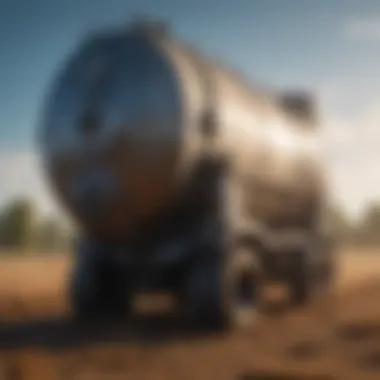
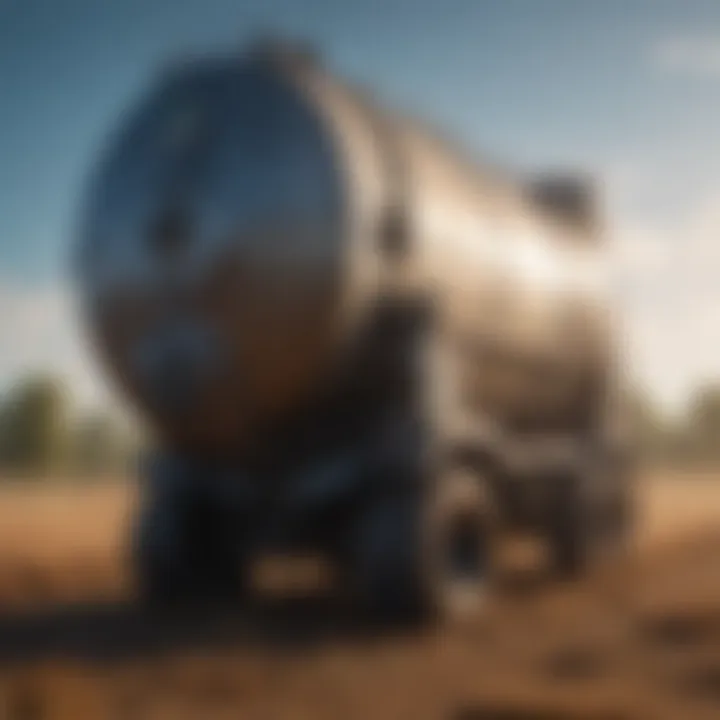
This means you should take into account how your air scrubber could influence those environmental factors. Certain models might offer specialized features like humidity control, which is essential for moisture-sensitive plants. Recognizing the specific needs of your plants allows for more tailored air management, promoting healthier growth and better yields.
Budget
Budget constraints are a reality many growers face, but they shouldn't compromise the quality of air management tools. Understanding your budget, alongside potential long-term savings, is crucial. A good air scrubber is an investment that can save costs related to plant loss or unsatisfactory yields due to poor air quality.
The market offers a plethora of options across various price points. Higher-priced units may come with advanced features that optimize filtration and energy efficiency, while budget-friendly options might suffice for smaller operations. It’s about striking a balance between upfront costs and long-term benefits. Investing in a quality air scrubber today could yield significant savings tomorrow by reducing operational failures and health issues for your plants.
Common Brands and Models
When considering air scrubbers, several brands stand out, each bringing unique models designed for varying needs. Some brand names you might come across include Phresh Filters, which offers a variety of carbon filter options, and VIVOSUN, known for their affordable and durable solutions. Other reliable brands include iPower and Active Air that offer competitive models with sufficient features to cater to different grow room setups.
The choice of a dependable manufacturer and model can greatly enhance your ability to maintain an optimal atmosphere within your grow operation, leading to heightened plant health and productivity. Always seek customer reviews or professional advice before settling to ensure that the specific model aligns with your needs.
Installation Procedures
Installing an air scrubber correctly is an essential step that can significantly impact its performance and, subsequently, the health of your plants. An efficient installation not only helps to optimize air quality in your grow room but also extends the lifespan of the equipment. Proper procedures can be the difference between a system that works like a charm and one that leads to issues down the road. If you skip or rush through this phase, you might find yourself facing challenges that hinder plant growth.
Some key elements to consider include:
- Placement: Positioning your air scrubber in a way that allows for maximum airflow within your grow room is crucial. This typically means placing it near the air intake of your ventilation system or close to the plants themselves.
- Sealing: Ensure that all ducts and connections are properly sealed. Any leaks can reduce the effectiveness of air filtration.
- Size Matters: Choose an air scrubber that aligns with the size of your grow room to avoid inefficiencies. An oversized unit might work harder than necessary, while an undersized one could struggle to keep the air clean.
By following a systematic approach during installation, you not only set yourself up for success but enhance the reliability of this vital equipment.
Setting Up Your Air Scrubber
To set up your air scrubber, first gather all necessary tools and equipment. Here’s a step-by-step guide:
- Preparation:
- Choose the Right Location:
- Ducting Connections:
- Electrical Setup:
- Testing:
- Unbox the air scrubber and check for any parts or accessories.
- Read the manufacturer’s manual for specific instructions on that particular model.
- Look for a spot that’s central to your ventilation system and allows for adequate airflow without obstruction.
- Make sure to connect the air scrubber to the ducting using compatible connectors. Use duct tape or clamps to secure these connections, ensuring they are airtight.
- Plug in the unit, keeping electrical safety in mind. If your model requires hardwiring, consult with a professional electrician.
- Once everything is connected, run the air scrubber to check for any operational issues. Look for signs of proper airflow and listen for unusual noises.
By adhering to these instructions, you can ensure your air scrubber is set up properly and ready to perform efficiently.
Common Installation Mistakes to Avoid
Even the most well-intentioned installations can hit snags if certain errors are made. Here’s a quick rundown of common pitfalls to steer clear of:
- Ignoring Manufacturer Instructions:
- Inadequate Airflow:
- Neglecting Duct Maintenance:
- Overlooking Power Needs:
- Always reference the owner's manual. Skipping steps or misinterpreting guidelines can lead to subpar performance.
- Poor placement that restricts airflow can hamper the efficacy of the scrubber. Measure the area first!
- Failing to keep ducts clean can result in clogs, which reduce air quality. Regular cleaning keeps your system functioning optimally.
- Ensure that your power supply meets the requirements of the air scrubber to avoid performance issues or potential hazards.
"Proper installation of air scrubbers is not just a preference; it's a necessity for sustaining plant health in controlled environments."
Taking the time to avoid these mistakes can save you from costly repairs or inconveniences later. By ensuring a careful and accurate installation, you lay the groundwork for a fruitful growing experience.
Maintenance and Care
Proper maintenance and care of air scrubbers is essential to ensure they function correctly and efficiently over time. Regular upkeep not only prolongs the lifespan of these vital devices but also significantly impacts the health of plants within a grow room. When air scrubbers are neglected, their performance tends to plummet, leading to various problems like poor air quality and potential damage to plant health. Therefore, understanding how to maintain these systems effectively is crucial for any serious grower.
Routine Maintenance Practices
Establishing a routine maintenance schedule is the backbone of keeping air scrubbers in prime condition. Here are some key practices to consider:
- Regular Inspection: Inspect your air scrubber monthly to check for any signs of wear or malfunction. Look for cracks or leaks in the casing, wear on the seals, and overall structural integrity.
- Cleaning Filters: Depending on the type of filter, cleaning could be as simple as washing under warm water, or you may need to replace them entirely. For instance, activated carbon filters typically need replacing every 6-12 months, while HEPA filters might last longer but still require regular cleaning methods.
- Check Components: Make it a habit to check all components, including ducts and connections, for any blockage or buildup, which can hinder airflow. Regular maintenance of these components promotes a consistent flow of clean air.
- Documentation: Keep a log of all maintenance activities. This could include dates of inspections, types of cleaning performed, and replacements made. This record can be useful for identifying patterns or chronic issues that may arise over time.
By adhering to these routine practices, growers can help ensure that air scrubbers continue to operate at peak performance.
Signs of Wear and When to Replace
Identifying signs of wear early can save growers from potential headaches down the road. It’s crucial to recognize when an air scrubber is no longer able to deliver the required air quality. Here’s what to look for:
- Reduced Airflow: If you notice a significant drop in airflow, it may be time to inspect filters or internal components. A blocked or clogged filter can severely impact the efficiency of an air scrubber.
- Odors: A sudden increase in unwanted odors in the grow room, even with an air scrubber in place, can signal a problem. It could indicate that the carbon filters are saturated or the unit needs cleaning.
- Increased Energy Consumption: If your electricity bill starts climbing unexpectedly, it could be a sign that the air scrubber is working harder than it should. This increased workload could lead to earlier failures.
- Physical Damage: Any visible damage such as cracks, rust, or corrosion should prompt immediate attention. In some cases, the air scrubber might need a complete replacement.
"Ignoring maintenance can lead to larger issues down the line, such as higher costs and reduced plant health. Regular checks and timely replacements are key!"
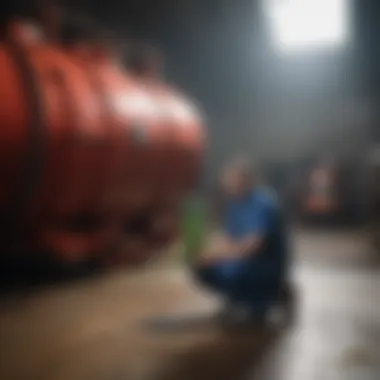

Staying proactive about maintenance and being vigilant in recognizing signs of wear can make all the difference. Growers who take these steps will foster a healthier environment for their plants.
Real-World Applications
In the realm of agriculture, particularly within the confines of grow rooms, the role of air scrubbers is nothing short of transformative. When one considers the snug, often controlled environment of a grow room, it becomes evident that air quality isn’t merely a preference—it’s a necessity. Scrubbers can fine-tune this environment, enabling the flourishing of crops by regulating particulate matter, controlling odors, and managing humidity levels. By taking a closer look at real-world applications, we can see how these systems are not just gadgets but essential components that directly contribute to plant health and yield quality.
Case Studies of Successful Grow Operations
Let’s dive into some unique examples that showcase air scrubbers in action. One such instance comes from a hydroponic farm in California, where growers faced issues with airborne pathogens that threatened their tomato crops. By strategically integrating a HEPA filter scrubber, they not only elevated air quality but also significantly reduced the incidence of disease. The outcome? A remarkable 30% increase in yield, coupled with a healthier plant profile that demanded less intervention from pesticides.
Then there’s a specialized operation in Canada focusing on orchids. This grower opted for an activated carbon scrubber to deal with strong odors that often turned nearby residents into reluctant critics of the farming enterprise. With the installation of an advanced scrubber, they managed to contain that overflow, releasing only fresh, clean air into the surroundings. This switch didn’t just improve neighborhood relations; it also enhanced the overall growth potential by ensuring that the orchids thrived in a precisely controlled atmosphere.
The beauty of these case studies lies not just in the success stories but in the lessons they provide. Different plants have unique needs, and altering airflow through sophisticated filtration can mean the difference between mediocre growth and a bumper crop.
Feedback from Growers Using Air Scrubbers
Feedback from the field always brings in a wealth of knowledge. Farmers using air scrubbers often point to a few recurring themes regarding their experiences. One grower, who specializes in leafy greens, remarked, "After adding the scrubber, I noticed a drastic drop in leaf curl and other stress signs. Fresh air really makes a difference."
Another farmer emphasized the ease of maintenance that modern scrubbers provide. Instead of worrying about complex setups or the hassle of regular replacements, many new models come with user-friendly interfaces that alert them when it’s time for a change. One example is a grower who noted, "I can focus on growth instead of guessing when I should clean or replace the filters. That’s invaluable."
To summarize, the practical applications of air scrubbers illustrate their essential nature in grow room management. Not only do they improve air quality, but they also foster healthier plants and enhance overall productivity. It’s abundantly clear that for those serious about agriculture, investing in a good air scrubber is more than just a nod towards technology—it is a strategic move towards fostering a flourishing growth environment.
Potential Limitations
Understanding the potential limitations of air scrubbers is vital for any grower aiming to enhance their agricultural practices. Despite their numerous benefits, air scrubbers come with drawbacks that can affect their efficiency and overall usability in various growing environments. It is crucial to consider factors such as air quality, system robustness, and budgetary constraints before choosing to invest in these machines. Recognizing these challenges will prepare growers for a more informed, practical approach.
Challenges in Air Filtration
The installation of air scrubbers can sometimes feel like throwing a Hail Mary pass. While they serve to significantly improve air quality, several challenges persist which can complicate their effectiveness. For example, if the ductwork is not properly sealed, the performance of the scrubber may be substantially hindered. Additionally, if particulates settle in the ducts or the filters get clogged, the system struggles to perform optimally.
- Infrastructure Layout: The physical layout of a growing environment can obstruct airflow. Twists, turns, and other obstacles can reduce the system's efficacy.
- Filter Placement: Improper placement of filters can lead to areas of stagnant air that does not circulate through the scrubber.
- Maintenance: Regular maintenance is required to ensure systems are working as intended. Failures in upkeep can lead to a cascade of complications, including increased energy consumption.
"Ignoring air quality management can be like sailing without a compass—you're bound to drift off course, and who knows where you'll end up?"
Cost vs. Benefits
When considering air scrubbers, the cost is an unavoidable elephant in the room. While initial investment and running expenses can be significant, weighing these against the tangible benefits is essential.
- Initial Investment: The upfront cost may include the scrubber itself, installation fees, and necessary ductwork. It isn't pocket change, that's for sure. For a novice grower, this might feel overwhelming, but the long-term savings on plant health and yield can often justify the expense.
- Operational Costs: Consider the recurring electricity costs associated with running these machines. If you're on a shoestring budget, those monthly bills can add up. However, many systems are designed for efficiency, meaning they consume less power than traditional ventilation methods over time.
- Return on Investment (ROI): A fruitful yield can elevate the bottom line, making the investment in air scrubbers worthwhile. However, it’s critical to perform your due diligence. By comparing yields before and after installation, farmers can ascertain whether air scrubbers enhance productivity sufficiently to cover their costs.
In summary, while air scrubbers offer substantial benefits, understanding their inherent limitations is essential. Awareness of challenges, along with a thorough examination of cost vs. benefits, positions growers for smarter decisions that lead to healthier plants and more fruitful yields.
Future Trends in Air Filtration Technology
In recent years, there has been a noticeable shift in how we approach air filtration in agricultural settings. The focus on sustainability, efficiency, and effectiveness in grow room environments has led to exciting innovations. Understanding these trends is crucial for farmers and enthusiasts aiming to optimize their air quality management systems and enhance plant growth.
Innovations on the Horizon
As technology progresses, the air filtration landscape is continuously evolving. Some noteworthy emerging trends include:
- Smart Air Filters: These come equipped with sensors and automation capabilities. They can adjust filtration intensity based on real-time air quality data, ensuring that plants receive only the best air conditions.
- Nanotechnology: Utilizing nanomaterials in filter design allows for more efficient filtration of airborne particles. These filters are not only more effective but can also last longer, saving growers money in the long run.
- Biological Air Filters: Incorporating living organisms in the filtration process taps into nature’s own air purification systems. By introducing specific bacteria or fungi that thrive on harmful pathogens, these filters enhance air quality while promoting biodiversity within the grow room.
Keeping an eye on these innovations allows growers to stay ahead of the curve, adapting their strategies to utilize the most effective technologies available.
Sustainability in Air Scrubber Design
Sustainability is no longer just a buzzword; it is an essential component that must be woven into every aspect of agricultural operations. With increasing awareness of eco-friendly practices, air scrubber technology is also evolving to meet these demands. Here are some considerations for sustainable design in air scrubbers:
- Energy Efficiency: Modern air scrubbers are being designed to consume less energy without sacrificing performance. Innovations like variable speed fans allow for less power usage when conditions permit.
- Eco-friendly Materials: The use of recyclable or biodegradable materials in the construction of air scrubbers reduces the environmental impact. This ensures that once the scrubbers reach the end of their lifespan, they do not contribute to landfill waste.
- Lifecycle Assessment (LCA): Conducting comprehensive evaluations of a product's environmental impact throughout its existence helps manufacturers identify areas for improvement. This assessment informs the design process, making products that are greener and more efficient.
Leveraging developments in sustainable air scrubber designs not only supports healthy plant growth but also aligns agricultural practices with global efforts to lower environmental footprints.
"The future of air filtration lies in our ability to merge technology with sustainability to create environments that nurture both plants and the planet."
By staying informed about these future trends, growers can make well-rounded decisions that benefit them economically and ecologically.
Ending
In the realm of cultivation, be it for personal use or larger agricultural operations, the role of air scrubbers cannot be overstated. This conclusion strives to encapsulate the profound implications that air scrubbers have on creating and maintaining ideal growing environments. With a focus on air quality, these systems play a pivotal role in safeguarding the health of plants while ensuring an optimal yield.
Recap of Key Points
The exploration of air scrubbers throughout this article has revealed several critical aspects:
- Enhanced Air Quality: Air scrubbers filter out harmful particles, volatile organic compounds, and pathogens that could jeopardize plant health.
- Improved Growth Conditions: By regulating humidity and temperature, these devices help maintain a stable environment conducive to plant growth.
- Cost Efficiency: While there is an investment involved, the benefits often outweigh the costs, resulting in healthier plants and increased productivity.
Final Thoughts on Air Scrubbers
In closing, the importance of integrating air scrubbers into growing environments can’t be downplayed. Whether you are managing a small indoor garden or overseeing a massive agricultural facility, having a well-functioning air scrubber can make a world of difference.
As the industry continues to evolve with technological advancements, air scrubbers are becoming not just tools, but vital partners in the journey towards sustainable agriculture. For growers eager to improve their operations, investing in quality air filtration is akin to investing in success. Effective air quality management doesn’t just improve current yield but also paves the path for future growth.
In essence, air scrubbers are not merely accessories in grow rooms. They are the unsung heroes that contribute to creating a thriving environment where plants can flourish.
In the end, understanding and utilizing air scrubbers is a crucial step toward achieving agricultural excellence. As we move further into an era where environmental factors heavily influence farming success, the conversation around air quality management has never been more essential.



